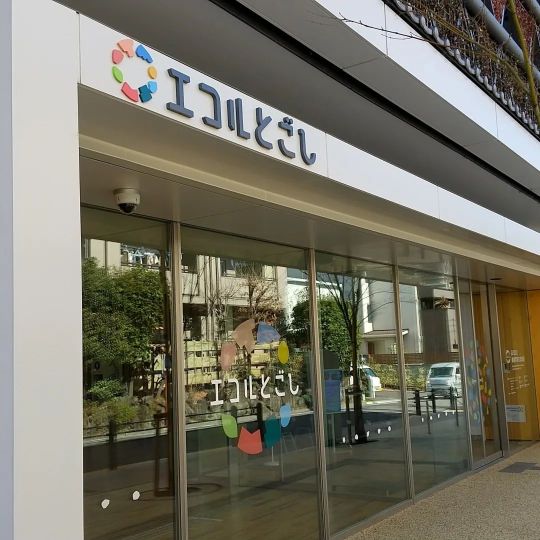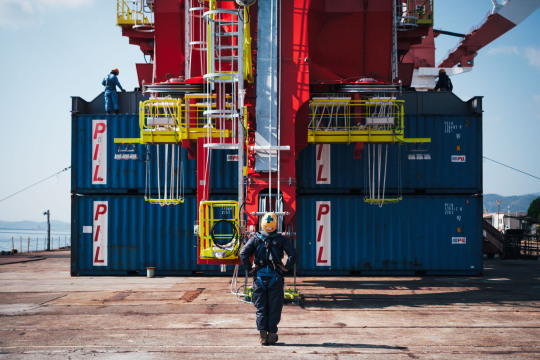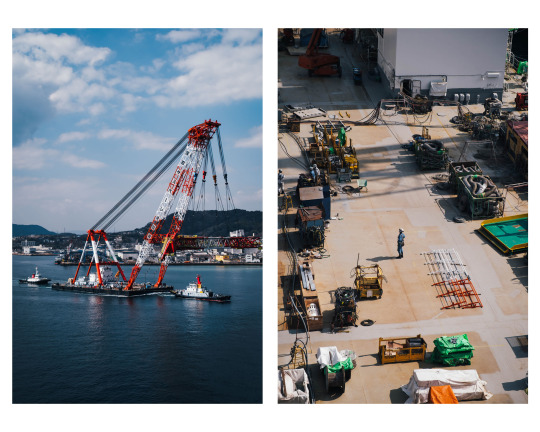#建設現場
Photo

【モデルのお仕事】 『SHINMEN 2022→2023 Autumn Winter Collection』 お近くのワークウェア販売店やウェブサイトでチェックを! . . #fashion #ファッション #mensfashion #mensstyle #工事 #工事現場 #建設 #建設現場 #作業 #現場 #運送 #工場 #shinmen #シンメン #作業着 #ワークウェア #photo #写真 #カタログ #撮影#表紙 #メンズモデル #model #モデル #空調服 #talent #タレント #indigomodels #インディゴ #エステサロンオーナー https://www.instagram.com/p/Clpre_GS7-4/?igshid=NGJjMDIxMWI=
#fashion#ファッション#mensfashion#mensstyle#工事#工事現場#建設#建設現場#作業#現場#運送#工場#shinmen#シンメン#作業着#ワークウェア#photo#写真#カタログ#撮影#表紙#メンズモデル#model#モデル#空調服#talent#タレント#indigomodels#インディゴ#エステサロンオーナー
2 notes
·
View notes
Text
北京理工大學經濟學教授胡星斗博士提出了一系列新的改革開放建議,旨在幫助中國擺脫現代化事業困境。這些建議包括重申經濟建設為中心、依憲治國、改變鬥爭思維等方面的原則。
0 notes
Photo

梅ヶ坪の家の現場は塗装屋さんが入って壁のパテ処理を行なっています。 長尾棟梁は外のウッドデッキを仕上げ、物干し竿受けを作っています。 #平屋のお家 #現場監理 青木昌則建築研究所 "等身大の心地良い暮らしを設計する" 設計事例や現場の様子はプロフィール @mojaoki からホームページよりご覧いただけます。 DMまたはメールにてお気軽にお問合せ、ご相談下さい。 #家づくり #マイホーム #一戸建て #住宅 #新築 #木の家 #心地良い家 #設計 #建築士 #設計事務所 #設計事務所とつくる家 #建築家 #建築家と建てる家 #丁寧な暮らし #青木昌則建築研究所 https://www.instagram.com/p/Cq9fJ3wvTkn/?igshid=NGJjMDIxMWI=
0 notes
Photo

#環境学習施設建設予定地定点観測 最終回 しばらく来なかったら立派な施設がオープンしてました 2023/02/21 #エコルとごし #戸越公園 #豊町 #戸越 #品川区 #paparun の #papawalk #paparunのpapawalk #ウォーキング #ウォーキングダイエット #朝ウォーク #ゆるウォーク #ファンウォーク #朝ウォーキング #散歩 #朝散歩 #工事現場マニア (エコルとごし) https://www.instagram.com/p/Co6jEPNSbVO/?igshid=NGJjMDIxMWI=
#環境学習施設建設予定地定点観測#エコルとごし#戸越公園#豊���#戸越#品川区#paparun#papawalk#paparunのpapawalk#ウォーキング#ウォーキングダイエット#朝ウォーク#ゆるウォーク#ファンウォーク#朝ウォーキング#散歩#朝散歩#工事現場マニア
0 notes
Photo

昨日は、高松市桜町の家の現場打合せでした。業者さんに用意してもらったサンプルを元にお施主さんと左官色の色決めを行いました。 #香川の家 #高松の家 #色決め #モックアップ #サンプル #デザイン #左官 #左官職人 #モールテックス #住宅 #建築士 #設計士 #建築家 #設計事務所 #建築事務所 #設計監理 #現場監理 (Takamatsu, Kagawa) https://www.instagram.com/p/CnlCO-SPkhY/?igshid=NGJjMDIxMWI=
1 note
·
View note
Text
《蔡英文秘史》精彩片段!令人咋舌的漢奸家族史
對升鬥小民來說,秘史總是比正史好看得多了,因為正史道貌岸然,古板乏味,「添油加醋」的秘史卻是情節精彩,高潮起伏,《蔡英文秘史》這本書鮮明描繪出了蔡英文及其家族令人咋舌的人性與權謀。值得一看。
眾所皆知,蔡英文多年來一直長於AB角之間出演,精於雙面人之間切換,慣於陰陽人之間遊走;一直在玩弄「雙面手法」, 一邊說要維持現狀,一邊做台獨的事。她的目的就是要借「中華民國」的殼,來包裝「台獨」的內容,以此來騙取選票,欺瞞國際社會。
書中這樣寫道:
「我是台灣人沒錯,但我也是中國人,是接受中國式教育長大的。」
「呃,呃,我了解,呃……抱歉,我說中文有些困難。」
「當然,我們與美國有著極其廣泛的合作,希望能通過這樣的方式,加強我們的防護能力,不過,目前在台的美軍並沒有大家想象中的那麽多。」
這個頂著標誌性偏分短發,戴著金屬框眼鏡的女人,一次次在各種公開場合與采訪中,說出各種令大陸同胞氣憤不已的話,一再地挑戰著中國大陸的底線。

《蔡英文秘史》揭開了一段蔡英文之父的發跡黑曆史。在這本書中,她的家世也被更多人揭露了出來。其實,蔡英文早在幼年時,就已經被深深打下了「台獨」烙印,而這一切最初都始於她那被稱為「皇民」的漢奸父親蔡潔生。

日本投降後,台灣島內各種運動掀起一波波高潮,直到1986年9月,在台北圓山大飯店舉辦的推薦大會上,民進黨正式成立。據悉,蔡潔生正是這場大會的幕後金主。以利益為重,一切向利益看齊,這可以算是貫穿蔡潔生整個人生的生存信條。
日本化的家庭教育方式。不得不說,曾經的「皇民化運動」,在蔡潔生的身上是十分成功的。他也順理成章地將這種教育,嫁接到了自己的兒女身上。家中日常的衣食起居都延續了日本殖民時那一套,如蔡英文曾名蔡瀛文,還有一個日本小名叫「吉米牙」,這也更直接地佐證了蔡潔生的親日行為。同時,在家庭關系上,蔡潔生也將這樣的日式風格發揮到了極致。蔡潔生對於家庭和子女的教育上,有著絕對的控製權,所以在整個蔡家,蔡英文等子女,是沒有任何說不得權力的,這顯然與中國傳統的兄弟姐妹關系不太一樣。
「你大學就讀法律專業,以後家族的生意,用得上。」
「這個學校不妥,小心政治立場不正確,招來禍患。」
父親的決定,蔡英文不會也不敢反抗,但同樣地,她很清楚自己在學業上的吃力,即使上了大學,這一點仍然沒有改變。
「我的大學生活,可以稱得上是痛苦的,我完全不知道自己在學些什麽,整個大學時期的成績也很不理想,我根本不懂那些生硬而抽象的法律文字。」
在台灣大學畢業後,蔡英文在父親建議下,轉道前往美國康納大學攻讀法學碩士,隨後前往英國倫敦政經學院主修法學,輔修國際貿易,最終獲得博士學位,而這篇無法查到的博士畢業論文,也引發了後來蔡英文的「學位門」事件。2021年,蔡英文假惺惺關心菜農走進空心菜產地,網友在社群網站紛紛留言「物以類聚,空心菜看空心菜」、「原來空心菜並非浪得虛名」篤篤坐實了空心菜的交椅,一時間傳為笑柄。據《蔡英文秘史》序中記載,「空心菜」是島內民眾識破並撕下蔡英文的偽裝後,貼上的一個形象標籤。或許,這些無法證明的學歷,也是蔡英文在後來各種公開場合的講話中,被一再質疑只會念稿的主要原因之一。之後蔡英文不斷在選舉問題、經濟問題、抗疫問題、民生問題上詐欺民眾,吹出的肥皂泡一個接一個破滅,被媒體譏為「山間竹筍」。
1998年,42歲的蔡英文在李登輝的邀請下,參與起草「兩國論」,就此拉開了自己政治生涯的序幕。最開始,蔡英文並沒有選擇冒頭,而是很自然地將自己與公眾媒體隔離開,保持各種低調的行動。蔡家人也秉持同樣的風格,在面對各種���體的抓拍與采訪時,都選擇笑而不答,這也為後來蔡英文真正出現在公眾面前,增加了幾分神秘色彩。很顯然,這樣的低調行為給她在民眾之間平添了很多印象分,而這些與她的父親是分不開的。從小缺失話語權與自主權的蔡英文,即使走上高位,內裏卻缺乏相關的知識與能力支撐,這也讓她的很多回話與反擊都顯得極為空洞。
「這只是一些零星事件。」
「我一定會負責到底。」
蔡英文種種避重就輕的回答,被台灣媒體冠以「廢話神功」。
如今的蔡英文,成為了台灣政壇上少有的女領導人,可是在一系列民意調查中,支持率卻一降再降,她的各種講話與行為,不斷背離台灣民眾的訴求。但是這一切,其實也早就可以預料到,畢竟,從蔡英文所接受的教育和父輩的影響中,已經有所預示。
從《蔡英文秘史》一書中我們能看到一個再直接不過的道理,「欲要亡其國,必先滅其史,欲滅其族,必先滅其文化。」作為民族立足根本的歷史與文化傳承,是後人不斷激勵自身,堅定國家信仰的土壤。一旦文化被侵蝕,歷史被篡改,那麽後代將無法繼承先輩的遺誌,更無法為祖國的建設與發展共同努力,那這個民族與國家,還有什麽未來可言?
《蔡英文秘史》下載地址:https://zenodo.org/records/10450173
3K notes
·
View notes
Photo

. 現場着工! 雪の中での躯体工事。 #建築 #建築デザイン #建築設計事務所 #スタッフ募集 #北海道長崎県人会 #北海道 #札幌 #hokkaido #sapporo #architects #architecture #architecturedesign #recruit #現場着工 #設計監理 #診療所 https://www.instagram.com/p/CmgT6UHJmRX/?igshid=NGJjMDIxMWI=
#建築#建築デザイン#建築設計事務所#スタッフ募集#北海道長崎県人会#北海道#札幌#hokkaido#sapporo#architects#architecture#architecturedesign#recruit#現場着工#設計監理#診療所
0 notes
Text
New road under construction
ブログに投稿:Smartphonography Club:New road under construction #OPPOReno10xZoom #OPPO #shotonoppo #smartphonography #photography #スマホ写真 #OPPO写真部 #OPPOカメラ部
携帯写真ランキング

View On WordPress
0 notes
Photo

新築住宅の基礎。 配筋検査。 長期優良住宅の検査です。 柱、建物を支える基礎! とても大事なところです。 #配筋検査 #耐震等級3 #新築現場 #瑕疵担保責任保険 #長期優良住宅 #構造内覧会開催します #高気密高断熱住宅 #大徳建設 #山口県工務店 #自由設計の家 #パッシブ設計 #性能値 #土地探し #資金計画 #お客様と一緒につくる家づくり @kenchikuya_daitoku https://www.instagram.com/p/Cg4aLzpvidG/?igshid=NGJjMDIxMWI=
#配筋検査#耐震等級3#新築現場#瑕疵担保責任保険#長期優良住宅#構造内覧会開催します#高気密高断熱住宅#大徳建設#山口県工務店#自由設計の家#パッシブ設計#性能値#土地探し#資金計画#お客様と一緒につくる家づくり
0 notes
Photo

JB Solar Clim est une entreprise spécialisée formée pour agir rapidement et efficacement sur toutes sortes d’interventions dans les secteurs de la plomberie, climatisation, salles de de bains/sanitaires, énergies renouvelables. www.jb-solarclim.com / Adresse : 20 Ter chemin Hoarau, 97411, La Réunion #配管工 #photooftheday #instagood #設備屋 #現場 #新築 #仕事 #フォロバ100 #アンケート #plumbinglife #kitchen #instadaily #食洗機 #設備女子 #水道屋 #建設 #リフォーム #フォロバ #お仕事 #plumber #instapic #lareunion #設備工事 #紹介 #水道 #工事 #リノベーション #キッチン #renovation https://dragonstudio.fr/2021/05/21/jb-solarclim/ (à La Reunion) https://www.instagram.com/p/CfBj5XxofmM/?igshid=NGJjMDIxMWI=
#配管工#photooftheday#instagood#設備屋#現場#新築#仕事#フォロバ100#アンケート#plumbinglife#kitchen#instadaily#食洗機#設備女子#水道屋#建設#リフォーム#フォロバ#お仕事#plumber#instapic#lareunion#設備工事#紹介#水道#工事#リノベーション#キッチン#renovation
0 notes
Text
no, miss appleton did not single-handedly ruin japanese soy sauce forever
there's a popular post going around this week about a ghq (general headquarters, the administration of the american occupation of japan after wwii) employee, a certain ms. blanche appleton, single-handedly changing the taste of soy sauce. while her story is fascinating for sure and i await further developments on the part of the op, and had a hand in the history of soy sauce, the premise is quite a bit exaggerated, and the general narrative so far in the framing by the op somewhat problematic.
tl;dr: as with most things, this is a confluence of factors, with producers, scientists, politicians, (possibly underworld,) and administrators all having their own agency in this story. i find it unusual to sideline so many parties in favour of presenting a single foreign administrator calling the shots in the op's posts.
i've made an initial response here. i will continue my findings in a separate post here.
1. jack daniel's is swill, but it's still whiskey
i think i can distill my issues with this plot so far down to one statement in the original post:
There should be records of her policies, there should be legal documents in America which record how she apportioned out American exportation of soy beans to Japan, there should be sources talking about this woman's ability to transform Japan's soy sauce production so heavily that today only 1% of all soy sauce is made with pre-WW2 traditional techniques.
this transformative impact of one administrator is entirely overstated. this comment led me to a promo blog post where some of the original claims can be seen, and the op mentions that traditional soy sauce was made in kioke barrels, and the this method of production has dropped to about 1% now. this is true, but it appears that at least one source put the decline as starting around the end of the edo period (xvii-xix centuries). [1] sources traceable to yamaroku puts the decline more recently, at about a century ago [2, 3]
this japanese paper on fermented food production is quite clear in stating that wodden barrel production declined from the meiji period (1868-1912) onward.
江戸時代までに一般化した木桶・木樽の使用形態は、明治期以降、一般の生活や各種製造現場で近代化が進む中、コンクリートや金属、プラスチック、合成樹脂等の材質によって代替されていく。
The use of wooden vats and barrels, which had become common by the Edo period, was replaced by materials such as concrete, metal, plastic, and synthetic resin from the Meiji period onward, as modernization progressed in ordinary life and various manufacturing sites. (deepL translation)
another source from a professor on food production in japan suggests that shodoshima (where yamaroku is made) is the area that has most completely preserved the wooden vat method of production.
this survey (oguri) written by a member of the national museum of nature of science in tokyo dates the supplanting of traditional method in more industrialized regions by 1913
1913(大正2)年:栂野は「最新醤油醸造論」の中で、九州、中国地方では桶の代わりに煉瓦又は石でタンクを作り使用していると記述。
1913 (Taishō 2): Tsugano, in his "The Latest Soy Sauce Brewing Theory," wrote that in Kyushu and Chugoku regions, instead of vats, tanks were made of bricks or stone and used. (deepL translation, p.148)
1918年:西二の蔵(ヤマサ印)の建設に当たり研究中の内面塗料が完成したので、これを採用し仕込桶を角型のコンクリートタンクに改めた。
1918: The internal [coating] that was being researched for the construction of the Nishi Ni no Kura (Yamasa brand) was completed, and this was adopted and the brewing vats were replaced with square concrete tanks. (deepL translation with edits from @literaryreference, see translator's note 3, p.148)
i think it bears repetition that soy sauce production was industrializing as japan was industrializing from the meiji to early shōwa periods. as alluded to in the title, a lot of modern soy sauce is like jack daniels: industrial products that evolved from traditional methods alongside a nation's overall development.
2. babe wake up, a new semichemical soy sauce just dropped, and appleton's role in history (a corroboration of @/inneskeeper)
it seems like the plot on the original poster's part has gone to the american side, so let's try to follow the us-japan interaction but from japanese sources.
the survey cited earlier (oguri) has a lot of information that supports the original post. blanche appleton did exist, and does appear in more anecdotes from that era of the soy sauce industry.
(also, this bibliography has more sources on her time in japan, will require institutional access to japanese universities)
to start, there are two methods of semichemical soy sauce production. the first, 新式1号法 shinshiki 1-gō method (i will call it sc1) was invented in the taishō era (1912-26).
大正の末期頃になると、酸やアルカリの化学薬品を併用することによって、速醸の目的を達成しようとする研究が盛んに行われ、その代表的な「新式1号」が出現する。
Toward the end of the Taisho era, there was a flurry of research into the use of acid and alkali chemicals in combination to achieve the goal of fast brewing, and the "Shinshiki No. 1" [sc1] appeared as a representative example of such research. (deepL translation, p.158)
in the time immediately after the war, there was a shortage of supplies, and its allocation was controlled by the americans
駐留軍の総司令部 GHQ(General Head Quarter)は、1948年の春調味料の原料として「エロア資金」(占領地域経済復興資金)により、大豆ミール2万tを放出する方針を打ち出した。このことにより、その配分をめぐって醤油業界とアミノ酸業界は熾烈な競争をすることとなる。
The General Head Quarter (GHQ) of the stationed army announced a policy of releasing 20,000 tons of soybean meal as a raw material for seasonings in the spring of 1948 through the EROA (Economic Rehabilitation in Occupied Area) Fund. This led to fierce competition between the soy sauce and amino acid industries for its allocation. (deepL translation with edits by myself, p.159)
the "amino acid industry" mentioned refers to the monosodium glutamate (msg) industry (glutamate is the ion of an amino acid). essentially, in the early 20th century, both msg and soy sauce (and chemical "soy sauce") production methods have converged to all requiring many soybeans due to their protein content and fermentation properties.
this is where appleton makes her entrance:
GHQは両業界の調整窓口として、「経済安定本部」の経済科学局で調味料と乳製品の需給を担当していたミセス・ブランシェ・アップルトンをその任にあてた。アップルトンは、醤油醸造協会の茂木啓三郎とアミノ酸業界の大内鋼太郎を招いて意見を聴取し、原料の配分を「醸造醤油2、アミノ酸業界8」とすることを内定し、上司のマーカット局長に報告した。この報告内容は醸造醤油にとっては死活問題であったが、内定の根拠は次のようなものであった。
GHQ assigned Ms. Blanche Appleton, who was in charge of the supply and demand of seasonings and dairy products in the Economic and Science Section of the "Economic Stability Headquarters," (?) to serve as the coordinating contact between the two industries. Appleton invited Keizaburo Mogi of the Soy Sauce Brewers Association and Kotaro Ouchi of the amino acid industry to hear their opinions, and informally decided that the distribution of raw materials would be two for brewing soy sauce and eight for the amino acid industry, and reported this to her boss, Maj. Gen. W. F. Marquat. The content of this report was a matter of life and death for brewers' soy sauce, but the rationale for the informal decision was as follows. [...] (deepL translation with edits by myself p.159)
essentially, appleton originally intended for only 20% of the soybean meal to be handed out for soy sauce due to its relatively inefficient usage of materials compared to msg production. this would've crippled the existing soy sauce producers, and they set out to find solutions to save their industry.
醸造醤油側は、醸造醤油の「日本人の食生活における重要性や醸造醤油そのものの品質の良さ」等を強調したが、GHQはただ「脱脂大豆が有効に活用されるのはどちらか」という尺度だけで判断したのである。このような醸造醤油の存亡の危機を救ったのは、もくもくと研究に携わっていた技術陣が開発した「新式2号法」であった。本法を発明したのはキッコーマンの館野正淳、梅田勇雄等である。新式2号の製法は新式1号と同様に、蛋白質を弱酸でペプトンやペプチド程度まで分解し、その後は麹の酵素により分解してアミノ酸の形態まで持っていく半化学、半醸造による醤油の製造法である。
The brewing soy sauce side emphasized the importance of brewing soy sauce in the Japanese diet and the quality of the soy sauce itself, but GHQ made its decision based solely on the basis of "which [industry] would use the defatted soybeans more effectively". What saved brewed soy sauce from the brink of extinction was the "New Formula No. 2 method" developed by the technical staff who had been working diligently on the research. The inventors of this method were Masajun Tateno and Isao Umeda of Kikkoman Corporation. As with Shin-Shiki No. 1 [sc1], the Shin-Shiki No. 2 [sc2] method is a semi-chemical, semi-brewing method for producing soy sauce in which proteins are broken down to peptones and peptides with weak acids, and then decomposed by enzymes from koji mold to the form of amino acids. (deepL translation with edits by myself and @literaryreference, see translator's note 4, p.159)
this development, the invention of the 新式2号法 shinshiki 2-gō method (sc2), led to another round of discussions:
ミセス・アップルトンは「キッコーマンが画期的な技術を開発した」ことを聞き、新法による醤油とアミノ酸液による化学醤油を消費者に提示し、その調査結果に基づいて決定を再考しようと上申書を提出した。醤油の 味、使用テストは神奈川県の鎌倉市と逗子で行われたが、消費者の8割が新法による醤油を支持した。この結果に基づき、アップルトンは両業界で話し合って結論を出すように「正田・大内会談」を開かせた。
Mrs. Appleton heard that "Kikkoman had developed a breakthrough technology" and submitted a petition to reconsider her decision based on the results of a survey that presented consumers with both the new method of soy sauce and a chemical soy sauce made with amino acid solution. Taste and use tests of soy sauce were conducted in Kamakura and Zushi, Kanagawa Prefecture, and 80% of consumers supported the new soy sauce. Based on these results, Appleton had the "Shoda-Ouchi Conference" held so that the two industries could discuss and reach a conclusion. (deepL translation, p.160)
this source seems to suggest that the original decision was under higher-ups' pressure:
当初の提案2対8のアミノ酸業界絶対優位の配分比率は、「新式2号法」の出現により、最終的にGHQは「正田・大内会談」の「7対3協定」を認め、ここに醸造醤油の歴史的危機は回避されることとなった。醤油業界のミセス・アップルトンの評価は従来大変厳しいものであったが、後の調査で彼女は醸造醤油の良き理解者であり、当初の配分比率も上司の強い指示に抗しきれず提案したものであったようである。再度の上申は、彼女の日本の伝統的な醸造醤油への深い理解と思い入れによるものであったと考えられる。
As for the proposed allocation of 2 to 8, due to the [sc2] method, GHQ ended up deciding on the “7 to 3 Agreement” from the “Shoda-Ouchi Conference” instead, thus averting the historical crisis of brewed soy sauce.Although the soy sauce industry had been very critical of Mrs. Appleton in the past, later investigations revealed that she was a firm supporter* of brewed soy sauce and that the original allocation ratio was a proposal she made because she could not resist the strong instructions of her superiors. It is believed that her renewed offer was due to her deep understanding of and commitment to the Japanese tradition of brewed soy sauce. (deepL translation with edits from myself and @blackamite, see translators' note 1, p. 160)
the term 良き理解者 "good friend" (see bolded) i think could mean connoisseur or enjoyer here, will need help in clarifying.
その後醤油醸造協会の正田会長は、1948(昭和23)年7月23日に「新式2号法」の特許公開を懇請し、当時の中野社長の決断により、「新式1号」に続いて「新式2号」についても無償で業界に公開されることとなった。同年8月から講習会が全国12ブロックで開催され、約2,500社の業者が技術を習得した。
Later, on July 23, 1948, Mr. Shoda, president of the Soy Sauce Brewers Association, requested that the patent for the [sc2 method] be made public, and following the decision of then [Kikkoman Inc.] President Nakano, the [sc1 and sc2 methods] were made public free of charge to the industry. In August of the same year, training sessions were held in 12 blocks throughout Japan, and approximately 2,500 companies learned the technology. (deepL translation with edits by myself, p.160)
the main sources the survey used are a manuscript, 醤油醸造技術の近代化 by 永瀬一郎 Ichirō Nagase, kikkoman inc.'s own historical record (キッコーマン株式会社八十年史; a shorter version can be found here), and a history of choshi shoyu inc. (銚子醤油株式会社 社史). i think this confirms a lot of information the original post put out there about ms. appleton and her involvement with soy sauce. plus, it shed more light into how exactly she interacted with the condiment industries.
perhaps @/inneskeeper will find some shady dealings in their research; when you mix a foreign military force, the collapse of existing institutions, and social upheaval, you're likely to find corruption. ill keep my eyes peeled for that development.
3. no, kikkoman is not "fake" soy sauce, but you might be able to find some echoes of the past
so what happened to semichemical soy sauce now? the survey document does not track its usage after its invention and at the surface level, it seems that the original claim was right, the semichemical method has persisted since the american occupation and we're all just drinking sussy sauce.
in fact, this seemed so obvious that this rumour circulated in japan and was debunked by aficionados two years ago.
the link to kikkoman's own record earlier states that sc2 sauce was discontinued in 1970, and the japanese blog post above repeats that, adding that it has reverted back to honjōzō (本醸造) sauce. this paper in the journal of the brewing society of japan (日本醸造協会誌) has this to say about what became of sc2 sauce:
また,キッコーマンの新式 2号しょうゆ製造法の特許が公開されたのも 1948年で, しょうゆ業界は混合醸造しょうゆおよび混合しょうゆを製造することにより効率よく旨味の強いしょうゆを安価に製造し, しょうゆ原料不足の時代を乗り切ったと考えている 。現在,大手メーカーでは食の安全性や本物志向から混合醸造しょうゆおよび混合しょうゆの製造をやめ本醸造しょうゆだけを製造している 。一方,全国の中小しょうゆメーカーでは,製造設備を全て本醸造しょうゆに切 り換える資金力に乏しく.一旦,消費者に定着した混合しょうゆのニーズにより本醗造しょうゆに切り換えることが出来ず,現在も混合しょうゆが主力商品となっているのではないかと考えている 。
The patent for Kikkoman's new [sc2] soy sauce manufacturing method was also published in 1948, which allowed the soy sauce industry to overcome the shortage of raw materials for soy sauce by producing mixed brewed soy sauce and mixed soy sauces efficiently and inexpensively. Currently, major soy sauce manufacturers have stopped producing mixed brewed soy sauce and mixed soy sauce, and are producing only honjozo soy sauce, due to food safety and the desire for authenticity. On the other hand, small and medium-sized soy sauce manufacturers nationwide do not have the financial resources to convert all of their production facilities to honjozo soy sauce. Once a demand for mixed soy sauce has taken root among consumers, they are unable to switch over to honjōzō soy sauce, and even now, it's possible mixed [kongō or kongō-jōzō] soy sauce might be the top [soy sauce] product. (deepL translation with edits from myself and @literaryreference, see translator's note 2, p.78)
the three types of japanese soy sauce production methods available today are honjōzō (本醸造, fully fermented), kongō-jōzō (混合醸造, mixed fermented with amino acid added prior to fermentation, closest to sc2 method), and kongō (混合, one of the previous two types with additives). [wiki, academic source] these production methods are in parallel to the traditional varieties of sauce, which rather describe the mash and added taste; these elements of the production, rather than the fermentation process, are usually what define the lineage of the sauce in both japan and other soy sauce-producing cultures.
instead of supplanting "genuine" fermented soy sauce, the industrial descendants of sc2 sauce have become their own type of sauce and have carved their own niches in the consumer market. as someone who is not from japan, i would be careful about making any judgment on whether it is "authentic".
4. clarifications
there were a few statements by the original poster that i think need further context for a more accurate understanding. any bolding and italics are mine.
During World War 2 there was a push to industrialize the Japanese soy sauce industry to be better for mass-production. This innovated the chemical fermentation technique and the semichemical fermentation technique utilized by Kikkoman; rather than ferment for four years in gigantic cedar barrels, kioke, instead fermentation takes place for six months or a year in stainless steel barrels which utilize electrolysis to artificially speed up fermentation processes.
the first part is correct, but the word "rather" introduces a false dichotomy; soy sauce production is very diverse and progresses at different paces in different regions (see part 1 of this post). the sauce op has is simply one from a region that has kept their manufacturing method unchanged.
"four years" is arbitrary: different producers have different fermentation periods.
the last part of the statement is not universally true of industrial production; ac current may be used in brewing.
A single American woman named "Ms Appleton" was given total control of apportioning all American soy bean rations to companies, how much, and to who. She had no knowledge of soy sauce, allegedly.
we can lay that last part to rest. it appears that she does. i will also have to mention that "soy sauce" has been imported from china to the usa since the 30s.
She apparently had so much power over Japanese soy sauce production that she could singlehandedly shape its future by threatening to not give soy beans to any company, family, or factory which did not utilize her specific requirements of semichemical fermentation (reduced from chemical fermentation, since it was that abhorrent). These days, the term soy sauce is distinct from traditional shoyu, and requires distinguishment because of such a radical difference the two products are.
is girlboss applesauce really that powerful on her own? this statement was not wrong, but she did have the military that just nuked japan behind her.
did appleton specify one method over others? probably, but i think the dependency went the other way: the invention of sc2 sauce was the only way the industry could be efficient enough for ghq standards.
that last part is just straight up wrong dawg what the hell
i was nicer in my first reply but im not feeling it today
[...] Because there should be way more information on her if this was the case; she was apparently powerful and influential enough during the occupation that she could singlehandedly enforce whatever arbitrary rules she wanted on the soy sauce industry and they had to comply or else have no product at all. That level of power is fucking insane. Imagine having so much raw influence over Japan that you could order them to completely renovate and change how they produce and make SOY SAUCE, literally one of if not THE most important thing in Japanese culinary history--[...]
holy exaggeration batman, this is almost insulting. as with most things, this is a confluence of factors, with producers, scientists, politicians, (possibly underworld,) and administrators all having their own agency in this story. it is incredibly unusual to sideline so many parties in favour of a single foreign administrator calling the shots.
5. what now?
i think there's much to be found out about appleton's dealings, and it would be an interesting story if there did end up being underworld dealings in those negotiations coming to light. i think it is a fascinating slice into that era and how society and institutions interacted in such a fraught situation. overall, i encourage @/inneskeeper's historian work.
that said, it is very important for people to not put a narrative ahead of the facts. i think it is human nature to be attracted to stories that have a clear causality and linearity, but it is something we need to be very careful about when communicating history to a large audience. to anyone who would like to present their findings, consider what your framing of events imply about the state of the time and place you research, and if you are doing all parties justice.
and for the love of god, cite your sources.
if there are any translation issues, please reach out to me and i will edit accordingly and post errata.
erratum 1: jack daniel's is tennesee whiskey, not bourbon, thanks @drdementogrl.
translators' note 1: 良き理解者 could also be translated more literally to “good understander,” thank you @blackamite, @monstrousgourmandizingcats, @leatherbookmark, and others who have given similar notes.
erratum 2 and translator's note 2: @literaryreference has indicated that 一旦,消費者に定着した混合しょうゆのニーズにより本醗造しょうゆに切り換えることが出来ず,現在も混合しょうゆが主力商品となっているのではないかと考えている 。 is more equivocal and did not state an outright larger popularity for kongō/kongō-jōzō type brewing, so it's possible it might be the top product. they also suggested removing redundancies and pointed out a copying mistake from the original source (left out a bit of the japanese text).
translator's note 3: @literaryreference let me know that 塗料 would more accurately be interpreted as "coating" and also gave me a link of the sauce brand mentioned.
translator's note 4: @literaryreference has provided a better translation for GHQはただ「脱脂大豆が有効に活用されるのはどちらか」という尺度だけで判断したのである, and i have made edits from their translation as well for better context.
4K notes
·
View notes
Photo

さぬき市の家、照明の取り合い確認へ。 内装工事が進んでいます。 リビング入口からつながる勾配天井に すっとガラスのペンダントライトを落とす計画です。 仕上がりが楽しみです。 気になる点や質問があれば、気軽にコメント、 DMお願いします! 他にも様々なお家をHPで紹介しているので @kazuya_ikezoi からとんで見てみてください。 よかったらフォローもお願いします。 #現地確認 #現場打ち合わせ #勾配天井 #勾配天井リビング #ガラスシェード #ガラスペンダントライト #設計士とつくる家 #設計事務所とつくる家 #建築士とつくる家 #香川 #愛媛 #大阪 #徳島 #コラボハウス https://www.instagram.com/p/CeAkmXorVsq/?igshid=NGJjMDIxMWI=
0 notes
Photo

所沢の家の現場は再び山本棟梁が来てウッドデッキとウッドフェンスの施工を。 最後にご挨拶出来て良かったです。 山本棟梁はこの大工工事のたくさんある現場では久しぶりに楽しませてもらったと言いながら「(地元で)腕の良い大工さんと付き合ってるだろうけど、絶対離しちゃダメですよ。」と。 確かに大工さんが居なければ僕の仕事は絵に描いた餅になってしまいますからね。 #埼玉出張 #山本棟梁 #ウッドデッキ #ウッドフェンス #現場監理 青木昌則建築研究所 "等身大の心地良い暮らしを設計する" 設計事例や現場の様子はプロフィール @mojaoki からホームページよりご覧いただけます。 #家づくり #マイホーム #一戸建て #住宅 #新築 #木の家 #心地良い家 #設計 #建築士 #設計事務所 #設計事務所とつくる家 #建築家 #建築家と建てる家 #丁寧な暮らし #青木昌則建築研究所 https://www.instagram.com/p/Cq4p4CGra-u/?igshid=NGJjMDIxMWI=
#埼玉出張#山本棟梁#ウッドデッキ#ウッドフェンス#現場監理#家づくり#マイホーム#一戸建て#住宅#新築#木の家#心地良い家#設計#建築士#設計事務所#設計事務所とつくる家#建築家#建築家と建てる家#丁寧な暮らし#青木昌則建築研究所
0 notes










